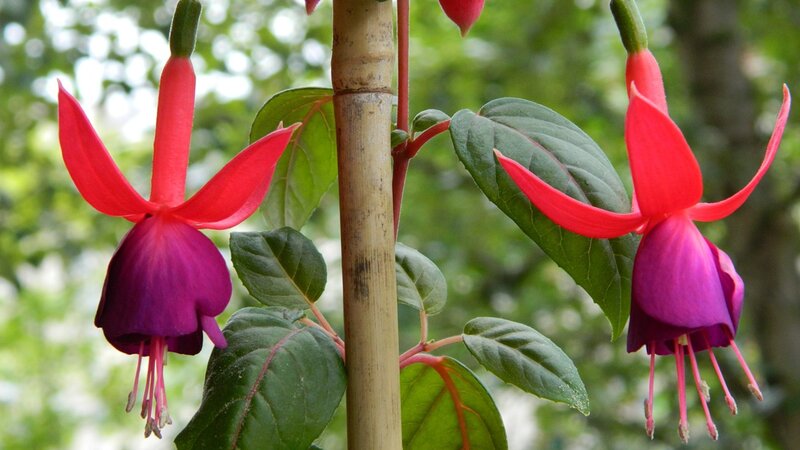Search
Login
Fuchsia in the garden and at home
The flower of fuchsia, popularly called the gypsy because of the similarity of the drooping flower with the beauty of the earrings of a gypsy.
Content
- General information video
- Growing fuchsia in a standard form
- Varieties of fuchsia video
- Fuchsia Care
- Fuchsia for a sunny place
- How to keep fuchsia in winter
General information
Fuchsia has a huge fan base among gardeners.

And indeed, the abundantly blooming fuchsia bush causes delight and admiration for everyone.

Simple, terry, semi-terry bells of the original form, with bent sepals of different colors - pink, cream, white, purple, violet, red, and sometimes two or three colors are combined in one flower.
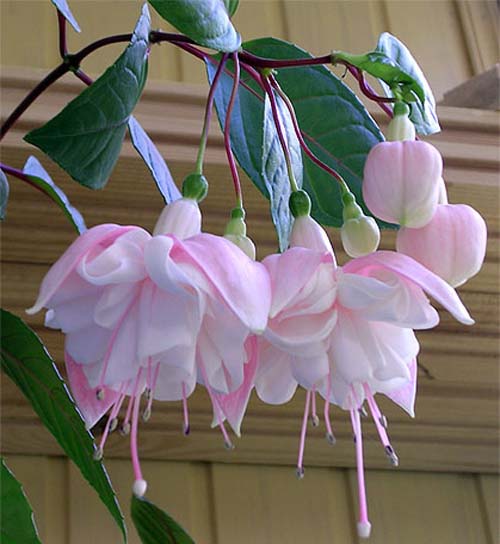
In countries with a mild climate, fuchsia is grown in open ground. In such a climate, fuchsia forms a shrub, which is sometimes used in hedges.
Imagine a wall of flowers of various colors, in such climatic conditions, grow powerful, highly growing garden varieties.

Unfortunately, we Russians are deprived of such beauty, but it is possible to grow these plants in pots, in the summer they can be put in the garden.
With a balcony, fuchsia can be settled on the north or east balcony, along with balsam and begonia.
Growing fuchsia in a standard form
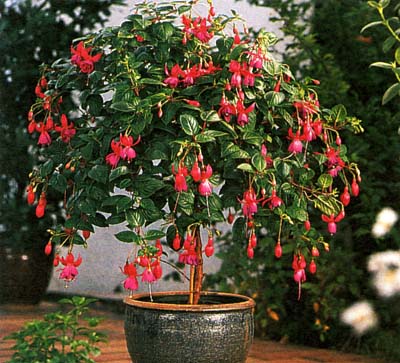
For the cultivation of fuchsia in a standardized form, there are special techniques, the essence of which is that in the lower part of the plant all side shoots are removed to form a trunk, the height of which depends on the variety and taste of the host.
The upper part, by pinching, forms a huge bouquet. Fuchsia in standard form can be grown from varieties with straight shoots, and from ampelous.

Such a tree requires reliable support, otherwise a strong wind can break the stems of fuchsia.
Of course, for the formation of the tree will take several years, but in the future, it will look good every year and bring you joy for a long time.
A very beautiful tree is obtained from the variety Celia Smedley.
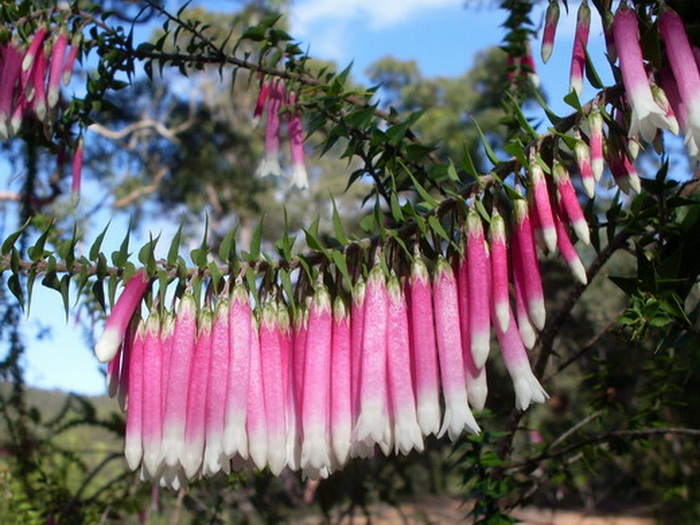
The variety of this fuchsia has rapid and powerful growth, which allows it to be turned into a tall standard tree within 2-3 years.
Ampel forms of fuchsia are not durable, since the shoots quickly wood and begin to grow up.
Experienced gardeners grow young plants from green cuttings every year, replacing them with old ones.
Varieties of fuchsia
Fuchsia has a huge variety of varieties. It is difficult to determine which variety of them is the most beautiful, there are no friends for the taste and color. Choose: Joan Pacey, Kobolt, Uranus,
Royal Velvet,
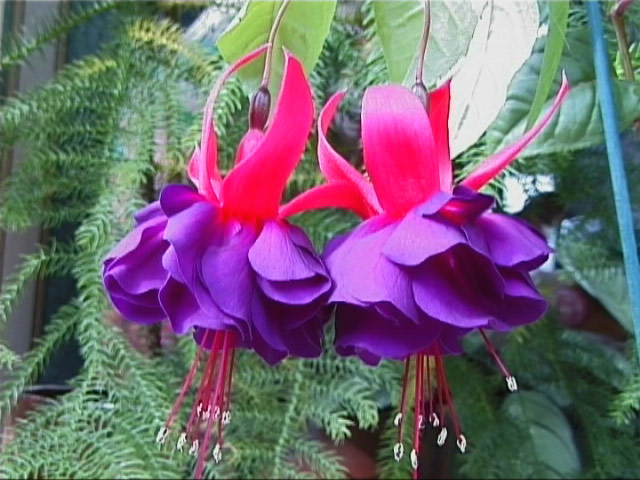
Postiljon
Veenlust,
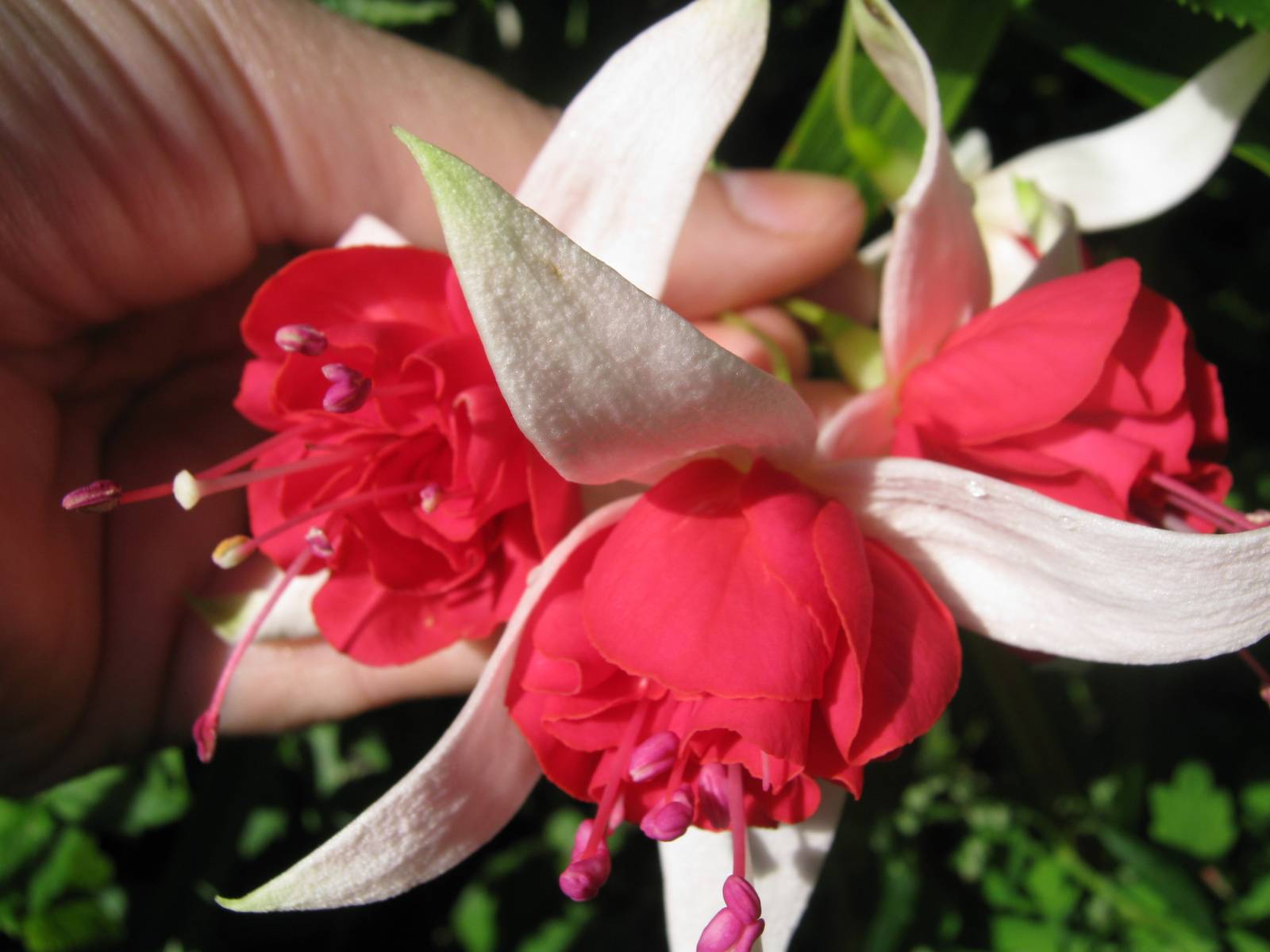
Minirose
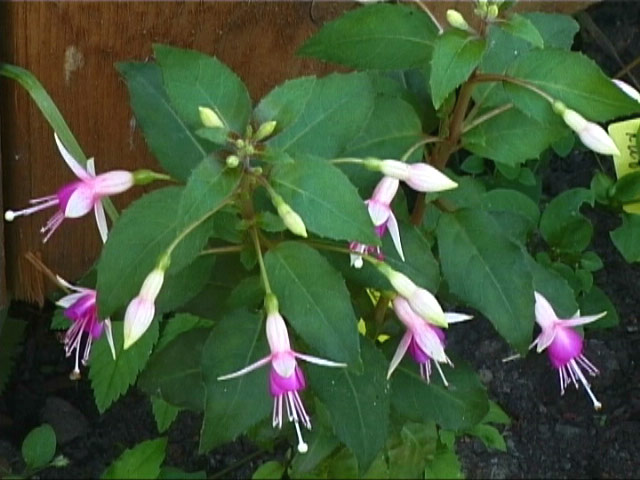
Chang,

Mantilla
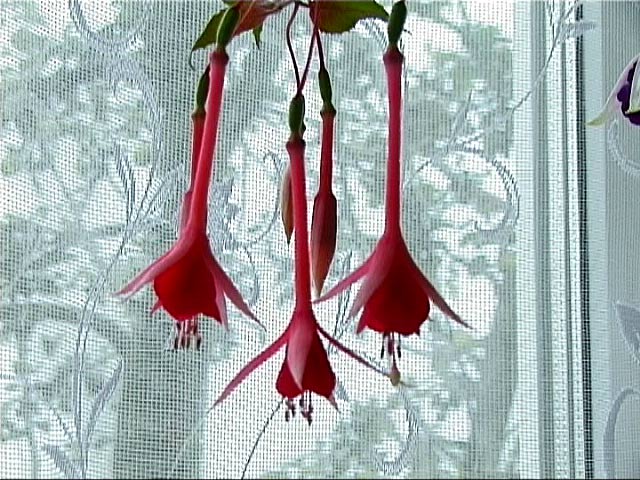
Dollar prinzessin,
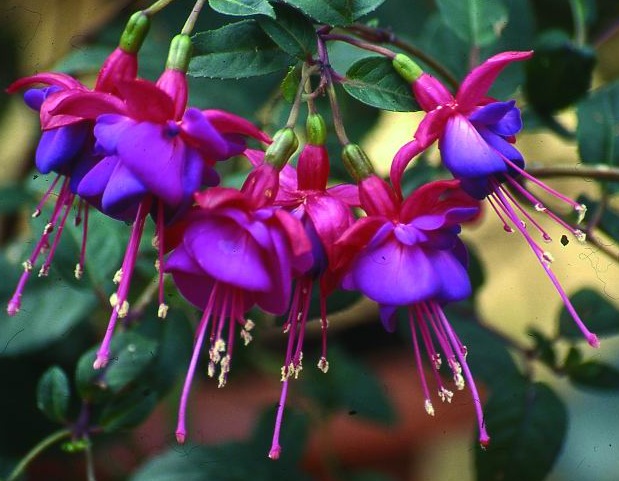
Checkerboard

Lunters Trots.
A pause in flowering depends on the characteristics of the variety.
Continuous flowering is especially characteristic for varieties with non-double flowers, such as Kobolt, Minirose, Dollar Prinzessin,
Deutsche Perle.
Fuchsia Care
The main condition for growing fuchsia in the garden or on the balcony is that they need partial shade.
Almost all fuchsias, with the exception of new products, do not like direct sunlight.
On a hot afternoon, leaves and flowers can get fatal burns if they are exposed to direct sunlight.
In all other respects, care for fuchsias is not much different from care for other pilots.
Many potted varieties of thermophilic fuchsia will feel good in the garden if they are planted in the ground in partial shade in the early summer.
For the winter, fuchsia must be transferred under the roof to a warm room.
The main thing in summer care is regular watering, top dressing and the constant removal of wilted flowers.
Flowers can form seeds, which depletes the plant, to the detriment of its flowering.
Top dressing can be carried out every week, until August, preferably with liquid fertilizer that stimulates flowering. Long-acting fertilizer can be applied once a season.
Fuchsia loves high humidity, responds well to morning and evening showers.
Watch out for pests such as leaf aphids and whiteflies. These pests often attack in a warm, calm place.
Fuchsia for a sunny place
Different varieties of fuchsia relate differently to lighting.
Among fuchsias there are shade-loving and photophilous.
But photophilous do not tolerate direct sunlight.
Recently, a number of varieties have been developed that grow especially well in open sunny places. Such plants bloom profusely throughout the summer.
But you need to understand that in the solar flower bed the need for water in such plant varieties is much greater than in the shade.
To make fuchsias feel good in pots, never put them in black plastic containers, as they are very hot in the sun.
Sun-growing varieties with upright shoots: Koralie,
Gartenmeister bonstedt,

Ampelic varieties: Sunnaqels Aloha - this variety blooms well in the heat,
Cascade
Winter Fuchsia Storage
Unfortunately, in our country, garden fuchsia does not winter in the open ground.
In autumn, they need to be dug up, transplanted into pots (do not forget the obligatory drainage) and transferred to a cool and dark room, with a temperature of 2 to 5 degrees.
In such conditions, fuchsias will rest until next summer.
Do not forget to maintain the moderate humidity of the earth, otherwise, if the earthen lump dries up, shoots will begin to dry out.
At the end of January, fuchsia must be cut off by a third, in the spring, remove all dried shoots, cut again, giving the plant the necessary shape and





